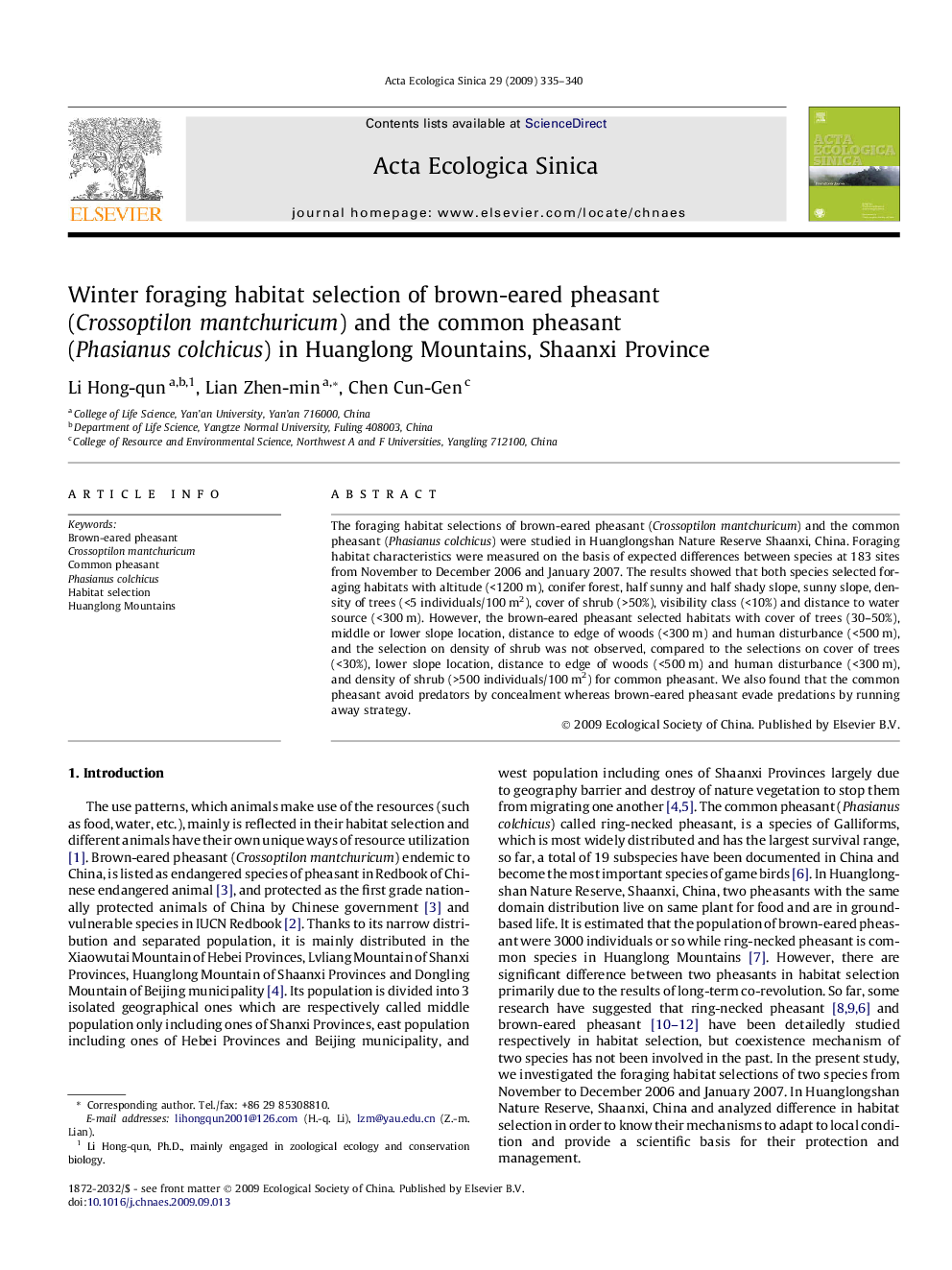| Article ID | Journal | Published Year | Pages | File Type |
|---|---|---|---|---|
| 4380143 | Acta Ecologica Sinica | 2009 | 6 Pages |
The foraging habitat selections of brown-eared pheasant (Crossoptilon mantchuricum) and the common pheasant (Phasianus colchicus) were studied in Huanglongshan Nature Reserve Shaanxi, China. Foraging habitat characteristics were measured on the basis of expected differences between species at 183 sites from November to December 2006 and January 2007. The results showed that both species selected foraging habitats with altitude (<1200 m), conifer forest, half sunny and half shady slope, sunny slope, density of trees (<5 individuals/100 m2), cover of shrub (>50%), visibility class (<10%) and distance to water source (<300 m). However, the brown-eared pheasant selected habitats with cover of trees (30–50%), middle or lower slope location, distance to edge of woods (<300 m) and human disturbance (<500 m), and the selection on density of shrub was not observed, compared to the selections on cover of trees (<30%), lower slope location, distance to edge of woods (<500 m) and human disturbance (<300 m), and density of shrub (>500 individuals/100 m2) for common pheasant. We also found that the common pheasant avoid predators by concealment whereas brown-eared pheasant evade predations by running away strategy.
